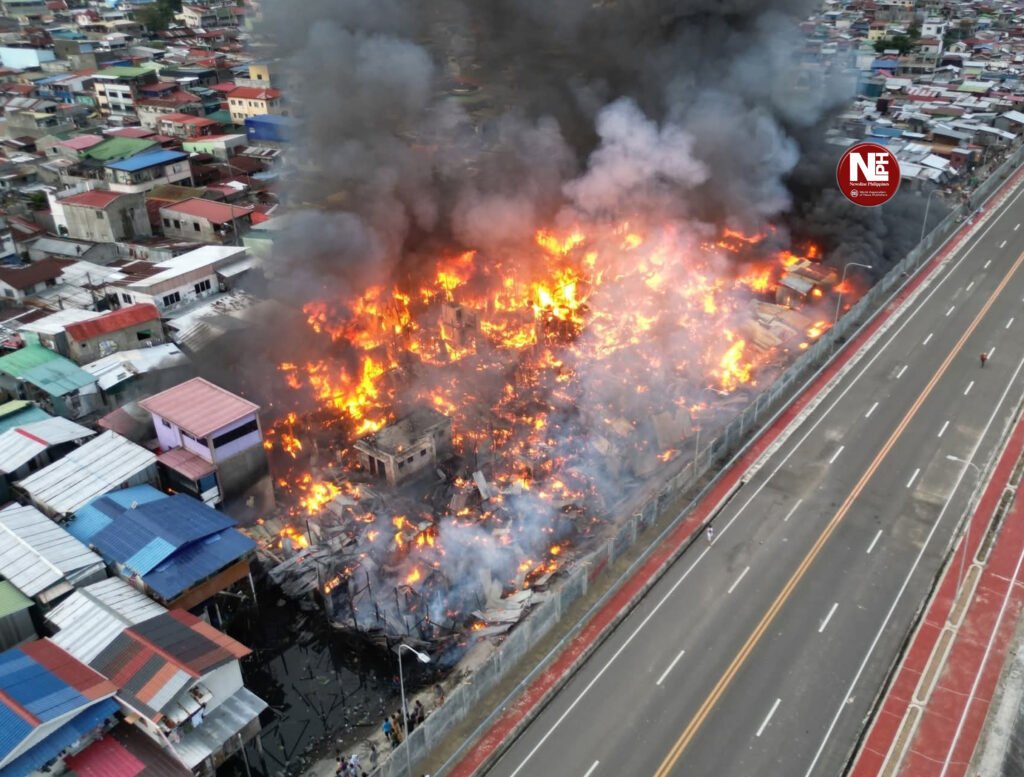
Davao’s fire programs tested as coastal communities remain at risk
DAVAO CITY (October 6) — A fourth-alarm fire swept through Barangay 21-C, Piapi Boulevard on Thursday afternoon, October 2, destroying 179 homes, displacing hundreds of families, and causing an estimated ₱1.79 million in damage.
The Bureau of Fire Protection–Davao Region (BFP-Davao) said the blaze spread rapidly across 7,160 square meters of the crowded coastal barangay, fueled by strong winds and houses made of light materials. The fire escalated to fourth alarm within half an hour before being declared under control at 6:30 p.m. and fully extinguished an hour later. No casualties were reported.
Residents described frantic escapes. “Wala na mi’y nadala. Ang importante nakagawas mi nga buhi (We weren’t able to bring anything. What matters is we got out alive),” said 62-year-old Nanay Belen.
Evacuees are now staying at the barangay gym as city offices deliver food, water, and clothing. Acting Vice Mayor Rigo Duterte assured continuous support.
What Davao has done
Davao City has invested in several fire safety and readiness programs in recent years:
· Oplan Ligtas sa Pamayanan: house-to-house inspections and safety awareness drives led by BFP to spot hazards and illegal wiring.
· Central 911 Fire Auxiliary Services: trained responders under the CDRRMO to reinforce BFP units during large incidents.
· Volunteer brigades: around 45 accredited community groups assist in firefighting and rescue operations.
· Hydrant maintenance: the Davao City Water District, with BFP and Central 911, ensures hydrants are operational.
· Awareness campaigns: fire drills, roadshows, and public exhibitions on fire prevention are staged during Fire Prevention Month.
· Upgraded equipment & expansion: new fire trucks, including a 10,000-liter tanker, have been acquired, and additional fire substations are being planned for underserved districts.
These initiatives aim to boost prevention, speed up response, and widen public awareness.
What still needs to be done
Yet Thursday’s fire revealed the limits of these efforts in high-risk barangays like Piapi:
· Congested housing and light materials still make coastal communities tinderboxes.
· Narrow access roads slow down firefighters and block heavy equipment.
· Illegal power connections remain widespread, posing recurring ignition risks.
· Permanent community fire brigades in fire-prone barangays have yet to be fully established.
· Long-term relocation for families in the most vulnerable coastal areas is still largely on paper.
Lessons, once more
The Piapi blaze echoes the 2023 fire that razed more than 1,200 houses in the same area — a tragedy that sparked similar calls for reform. Two years later, the challenges remain.
As investigators probe the cause of Thursday’s fire, the city is once again balancing immediate relief with the harder task of prevention.
Davao has programs in place, but residents and officials alike acknowledge a familiar truth: until safety measures match the scale of the risk, families in Piapi and other coastal communities will continue to rebuild their lives from the ashes.

